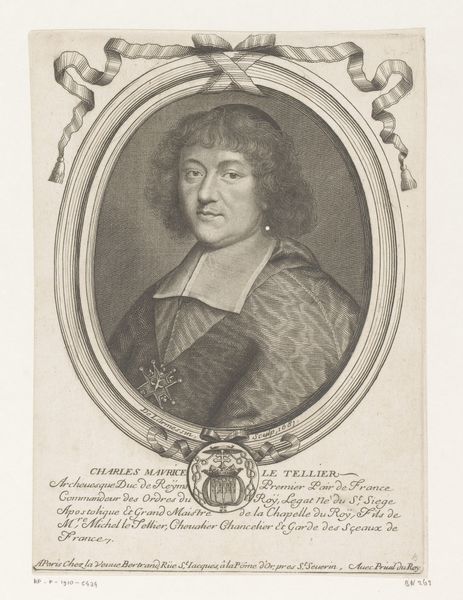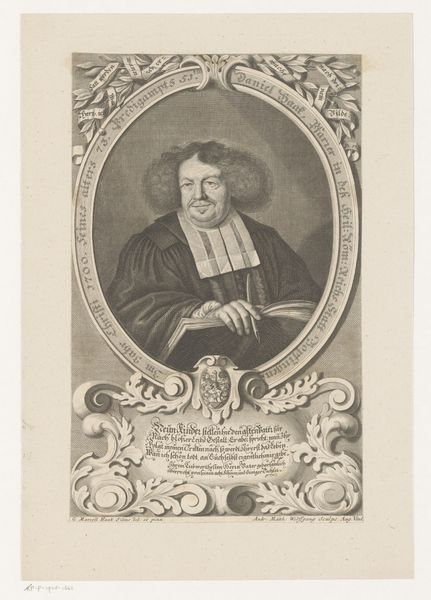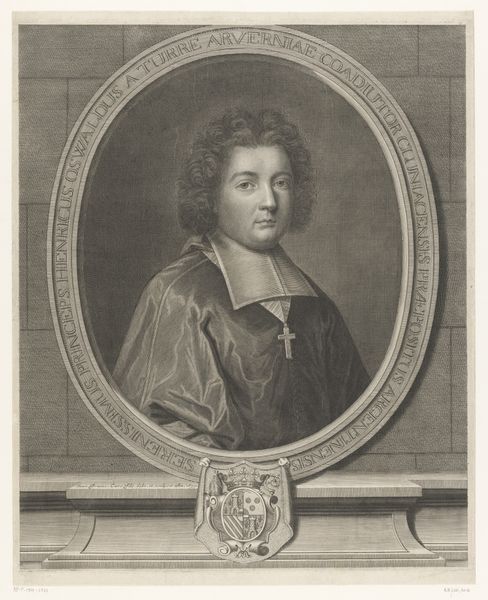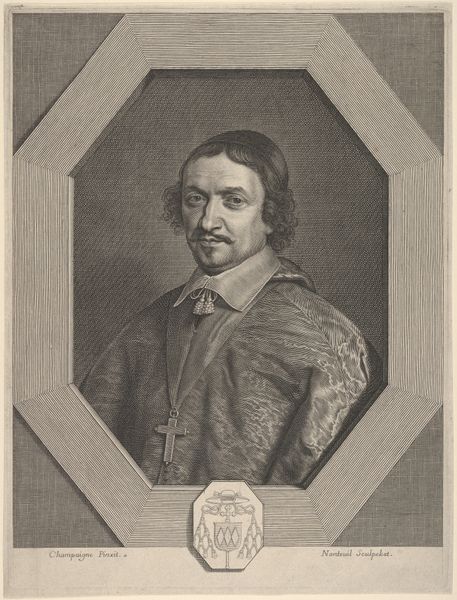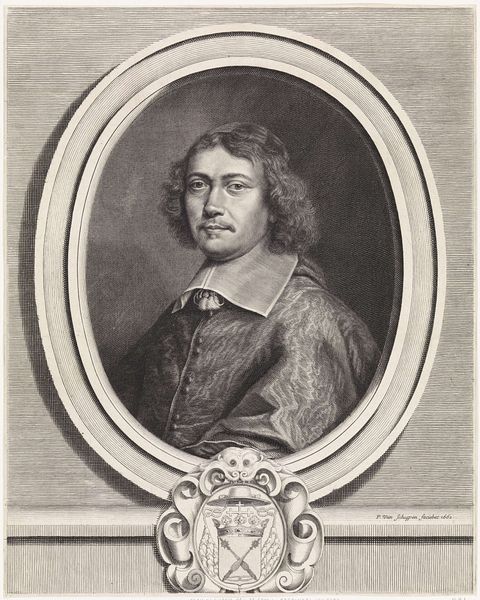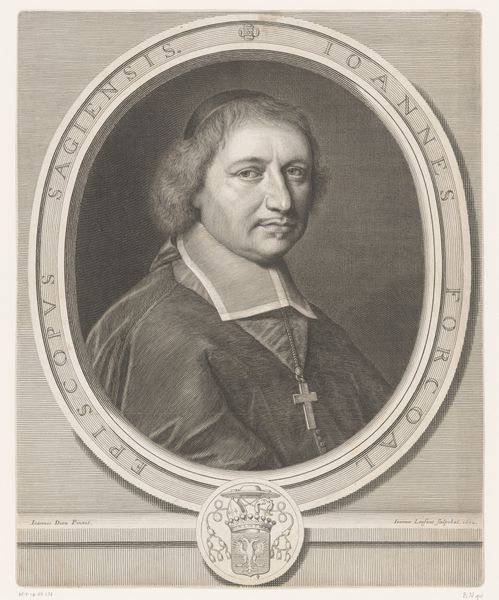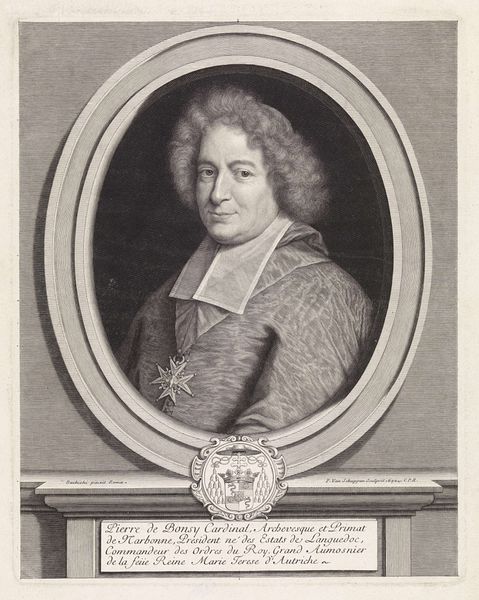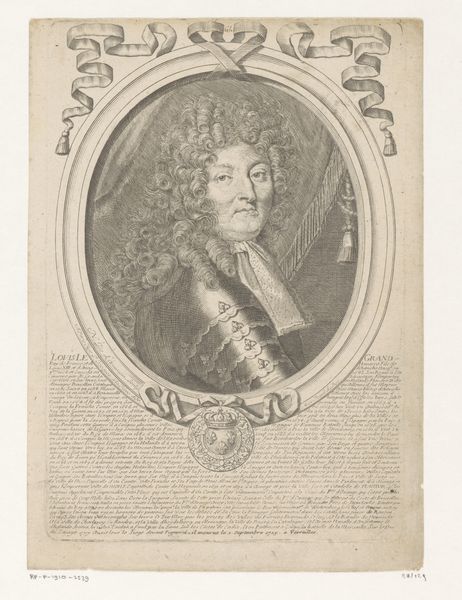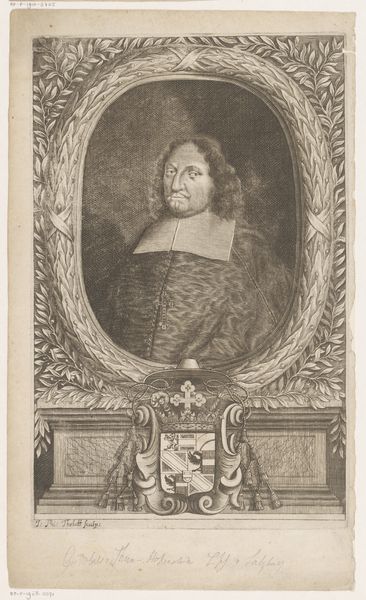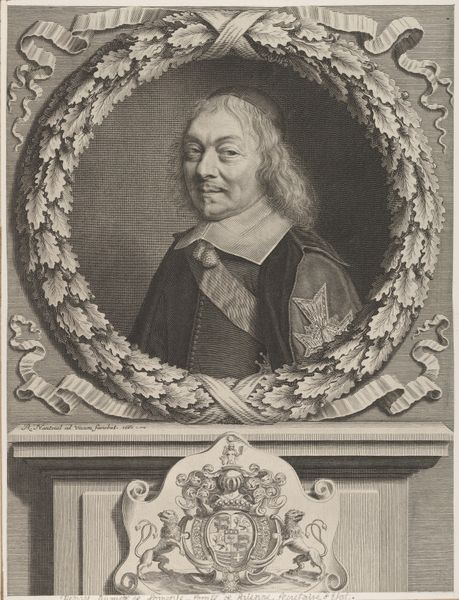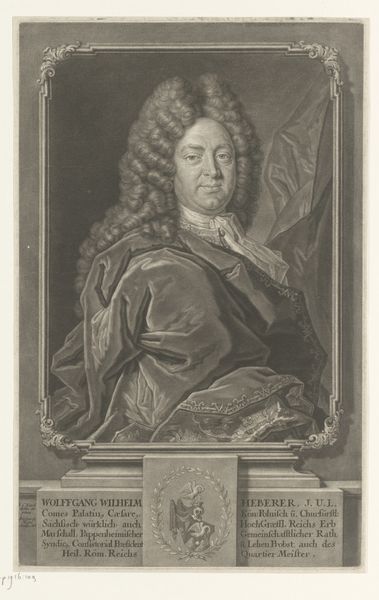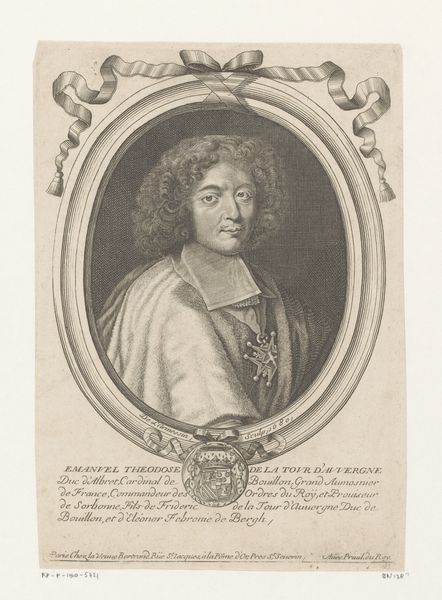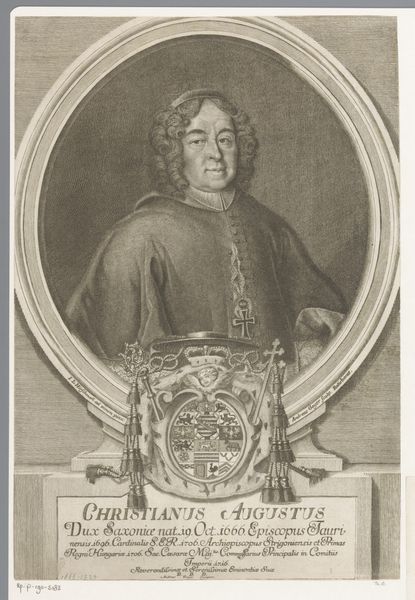
print, engraving
#
portrait
#
baroque
# print
#
old engraving style
#
historical photography
#
history-painting
#
engraving
Dimensions: height 420 mm, width 322 mm
Copyright: Rijks Museum: Open Domain
Curator: Look at this striking print by Jean Boulanger from 1664. It's titled "Portret van François Isidore de Haynin". What’s your initial take on it? Editor: The first thing that hits me is the overwhelming weight of historical and social standing. It's such a formal, rigid composition, and the subject looks so serious! I wonder about the intended audience. Curator: As a historical portrait, the intention was undoubtedly to solidify and project status. We see that Francois Isidore de Haynin was, among other things, an abbot, deeply ingrained in religious and political power. Note all the crests that act almost like a frame of ancestral identity! Editor: Precisely! The frame practically shouts his lineage and authority. All those heraldic devices… they're visual cues meant to situate him within a very specific socio-political hierarchy. It speaks to the importance of ancestry during the Baroque period. It really emphasizes how power was inherited and displayed. Curator: Indeed. And it continues a powerful language. In that sense, he almost transcends a specific likeness. The clothing, the composition – everything is meant to embody established, inherited ideas of leadership and religious sanctity. Even his pose seems calculated to evoke those notions. Editor: Do you think that it achieves that effect on contemporary viewers? Does that intended message of immutable authority hold up or does the artwork become simply another example of now obsolete propaganda? Curator: That’s precisely the core of our mission! In considering symbols over centuries, the intention certainly remains readable, though perhaps through a somewhat more cynical lens for us. Editor: Exactly. For today's museum visitor, removed from the specific context, this image prompts broader questions about the representation of power, tradition, and perhaps even their illusionary nature. Curator: Yes, precisely. That intersection – what an image meant versus what it evokes today – is such rich territory. Editor: I agree. Images always evolve to reflect shifting social conditions and become, inevitably, entangled in our present experience.
Comments
No comments
Be the first to comment and join the conversation on the ultimate creative platform.
